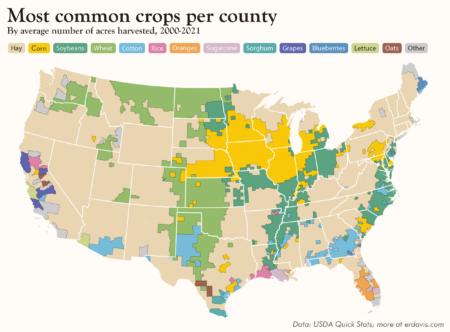- The quest for red rice beer: transregional interactions and development of competitive feasting in Neolithic China. In the 4th millennium BCE, in China, people brewed a sacred red beer in vats called dakougang using rice, millet, Job’s tears, wheat and snake gourd root.
- The biocultural origins and dispersal of domestic chickens. The earliest domesticated chickens are found 1650-1250 BCE in central Thailand and were attracted by stored rice and millet. No word on the role of beer.
- Performance, Economics and Potential Impact of Perennial Rice PR23 Relative to Annual Rice Cultivars at Multiple Locations in Yunnan Province of China. But does it make decent beer and attract chickens?
- Genomic prediction of zinc-biofortification potential in rice gene bank accessions. Check out in particular the aus subspecies. No word on whether the resulting beer and chickens are also high in zinc.
- Do ancient wheats contain less gluten than modern bread wheat, in favour of better health? More to the point, do they make better beer?
- Evidence for two domestication lineages supporting a middle-eastern origin for Brassica oleracea crops from diversified kale populations. Chickens not involved at all.
- Genome evolution and diversity of wild and cultivated potatoes. Propagation by tubers had a big effect on the cultivated potato genome compared to propagation by seed. And no, I’m not going to get into the whole chickens-in-South-America controversy right now, but you can google it.
- The genomics of linkage drag in sunflower. Introgression from wild relatives has been good for some things, bad for others, but in general pre-breeders should stick to the primary genepool. And watch out for chickens.
- From horticulture to agriculture: New data on farming practices in Late Chalcolithic western Anatolia. While domestic units were small and agriculture extensive, cooperation was widespread and inequality low. Then those Bronze Age elites got chickens…
Brainfood: Bonds, Agrobiodiversity, Subsidies, Orphan crops, Extension, Biodiversity tourism, Green farming
- Impact investing in biodiversity conservation with bonds: An analysis of financial and environmental risk. Need to show ’em the money, and that ain’t easy.
- The benefits and trade-offs of agricultural diversity for food security in low- and middle-income countries: A review of existing knowledge and evidence. Agrobiodiversity is positively connected with food security in two thirds of cases. Here comes the money…
- Repurposing agricultural support: Creating food systems incentives to address climate change. Less money for subsidies and trade barriers, more money for R&D.
- Orphan Crops: A Best Fit for Dietary Enrichment and Diversification in Highly Deteriorated Marginal Environments. More money for R&D you say? Document the evidence that orphan crops are good for you, link it to policy and communicate it to consumers.
- Extension services can promote pasture restoration: Evidence from Brazil’s low carbon agriculture plan. If only there were more money for extension too, eh?
- Linking livelihood and biodiversity conservation in protected areas: Community based tourism development perspective from developing country. People around protected areas don’t see much money from tourists, but that’s better than nothing.
- From boutique to mainstream: Upscaling wildlife-friendly farming through consumer premiums. Consumers are willing to fork over extra money for greener food.
New crop of crop maps crops up
Data viz wiz Erin has a bunch of excellent new maps of crop distributions in the USA over on her website. The data come from USDA Quick Stats, but her maps are way cooler. This, for examples, shows very strikingly what a powerhouse of agricultural biodiversity California is. Though I guess southern Texas comes close.
Damn what a beautiful ram
Brainfood: First farmers, First dogs, First olives, Food sharing, Seed longevity, Seed germination, Conservation & climate change, Urban gardens, Seed movement, Machine learning, Web crawling, Imaging spectroscopy
- Ancient DNA maps ‘dawn of farming’. Hunter-gatherers from Europe and the Middle East mixed and settled down as farmers in Anatolia, then spread to Europe.
- The Australian dingo is an early offshoot of modern breed dogs. The dingo originated from grey wolves, and found itself isolated, much earlier than all other dog breeds.
- The first use of olives in Africa around 100,000 years ago. Hunter-gatherers used the wild olive long before they domesticated either it or the dog.
- Intestinal parasites in the Neolithic population who built Stonehenge (Durrington Walls, 2500 BCE). Neolithic people and their dogs ate the same things.
- Comparative seed longevity under genebank storage and artificial ageing: a case study in heteromorphic wheat wild relatives. Seeds of the same crop wild relatives species but with different shapes have different seed longevities.
- Stepping up to the thermogradient plate: a data framework for predicting seed germination under climate change. But do heteromorphic seeds have different germination requirements too? Here’s how to find out.
- Conservation interventions can benefit species impacted by climate change. Biodiversity was helped with the effects of climate change in 30% of cases, especially if interventions were targeted on specific species. Genebanks available for comment.
- Urban conservation gardening in the decade of restoration. Speaking of interventions…
- South and/or north: an indigenous seed movement in South Korea and the multiple bases of food sovereignty. Wait, what about the genebank though?
- Perspectives in machine learning for wildlife conservation. Surely if you can use fancy tech and maths to monitor cheetahs, monitoring crop wild relative populations and landraces should be a doddle.
- Quantifying an online wildlife trade using a web crawler. Surely if you can crawl the web for evidence of illicit wildlife trade, crawling it to evidence of genetic erosion of crop diversity should be a doddle.
- Plant beta-diversity across biomes captured by imaging spectroscopy. How about capturing beta-diversity within crop fields, though? A doddle, no? We’ve come a long way since those first Anatolian farmers and their dingoes.
